If you’ve missed the previous installments, grab a cup of coffee, sit yourself down and catch up.
https://blog.easycareinc.com/blog/if-the-shoe-fits/functions-part-i-the-hoofs-memory-foam
We have bones in the middle and a hoofwall on the outside. We got a glimpse of the inside when we viewed the side dissection. We got to see what the hoof “shell” looks like without any pieces in it, like an empty clog shoe:
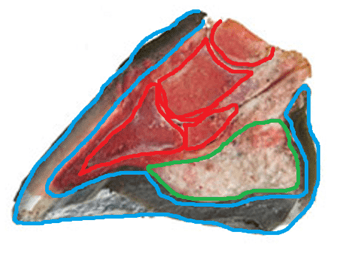

And now we want to know what goes between the rock and the hard place. What fits in between the bones and the “shell”?
Tucked away in that hoof capsule is the coffin bone. While we know there are no muscles down there, you still have to water a plant and, likewise, you need to get blood to and from those lower limbs.
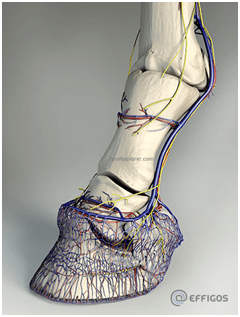
Hooray for blood! Now, if I had to run those fine cables between a rock (coffin bone) and a hard place (hoof capsule) I would need something. Come to think of it, I am putting a bony foot into a horn-shoe. I need a sock. A bloody, non-rubbing, super-tight, form-fitting sock.
Some have called the laminae the Velcro of the hoof. It’s pretty accurate in description and appearance (at least under a microscope).
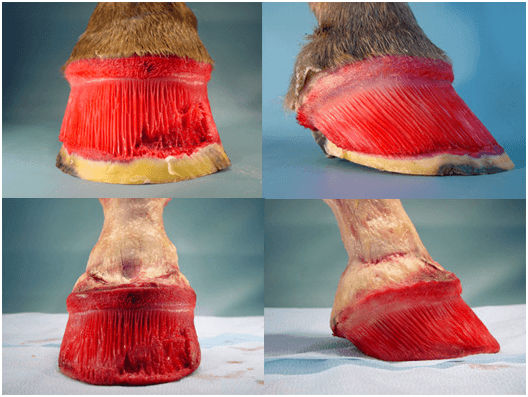
The laminae attach the visible hoof to the coffin bone. It’s like having female Velcro on one side and male Velcro on the other. You can see by its lined appearance that it’s not exactly hook and loop, but it does interlock as you can see under a microscope.
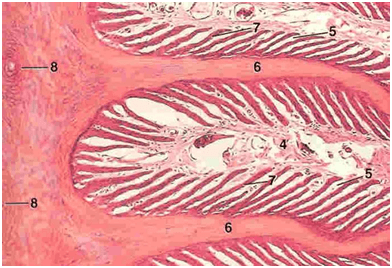
Lamina is Latin for “Thin Plates”.
The male and female parts of our Velcro are called sensitive lamina and insensitive lamina. The insensitive lamina is what grows on the inner side of the hoof as it grows from coronet band. As the hoof creates “new hoof” on the outside, it also creates new lamina on the inside. Like a conveyor belt of new material, the topside is horny hoof and the inside/bottom side is bloody lamina. The coffin bone is wrapped in sensitive lamina.

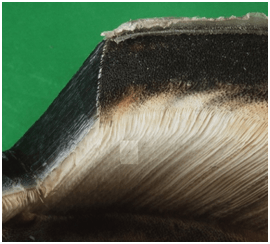
This explains why the lamina is structured in vertical lines: as the hoof grows, it needs to travel “down”. The bone ain’t a goin’ nowhere! The hoof needs to be able to Velcro, but minutely slide down the coffin bone’s corresponding lamina.
If I sliced a hoof like a piece of bread and took just a slice out near the bottom, this would be it:

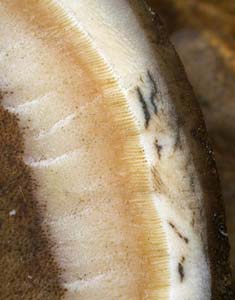
You can see, from the rim of lamina in this cross-cut, that they are not “thick”. There is the bone (cream in the middle), the sensitive lamina, the insensitive lamina and the hoofwall. On the right, you can see the lines of interlocking lamina from a solar view of the hoof.
When a horse gets laminitis, it’s a problem for a few reasons.
1) It hurts like a son of a gun. The lamina swell. You think hiking in sneakers that are too small is a pain. Try having a thousand tiny lamina get swollen between a bone and a hoof capsule. There is nowhere for the pressure to go. Your horse’s hoof is throbbing and all he can think of is to roll over and put his toes in the air, for hopes that less blood will reach them and the throbbing will stop. This is “Laminitis”.
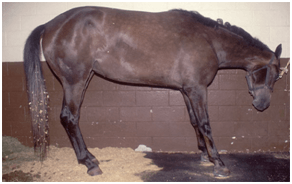
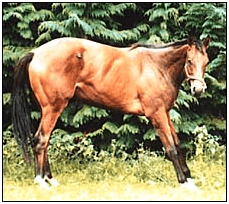
2) If the lamina swell, they are just holding blood, but not pumping. When the swelling subsides, the lamina can be atrophied and lose their grip. All his Velcro can go caput and his bone is no longer velcroed to the hoofwall and held in comfortable equidistant suspension from the ground. Noper, it can sink the whole weight of his leg column all bearing down on his sole. Every bit of pressure on their toes feels like torture. Did you ever owe the Mob money and they took pliers to your fingernails? No? Well I heard it’s sort of like that. Depending on the thoroughness of the lamina separation it is either termed “Acute Laminitis” or “Founder”.
So how does the blood normally pump through that foot, if it’s so tight? The hoof seems pretty rock solid… but what part of it isn’t? The frog. When the hoof steps down, the frog can expand. This allows the heels to spread wider. When the horse lifts its hoof back up again, it contracts.
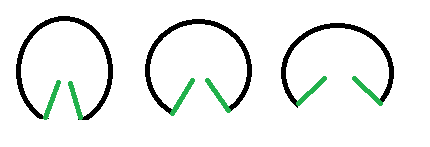
Some say the frog is a “heart” that pumps the blood. Sort of true, sort of not. I think people think that the frog is a “pump”. Who remembers these bad boys?
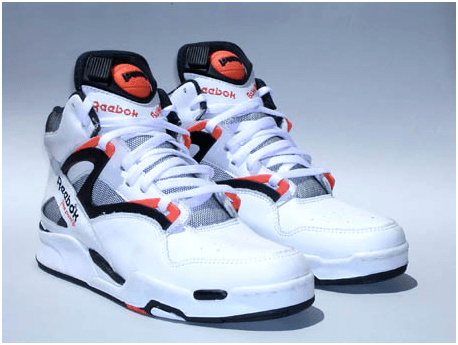
They had a PUMP on the tongue of the shoe that would fill air into pockets of the shoe and give you a custom fit. I feel people think of the frog as a “pump” like this, that if you press the frog, you are pumping blood. It’s more that the frog’s function is to allow the hoof to expand and contract and that action allows room for blood to come in and go back out.
Again, if we look at anatomy, we can tell the frog is not a literally “pump”. There is a digital cushion above that frog, not a blood vessel pump. Again, the frog allows the foot to expand and THAT draws blood in like a vacuum and pump system.
If you look at this happy “Skele” you can admire, even just in BONES, how small the coffin bone is in relation to the rest.
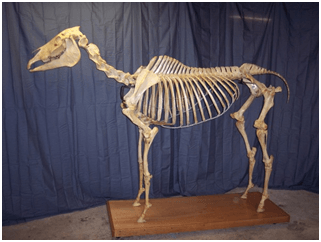
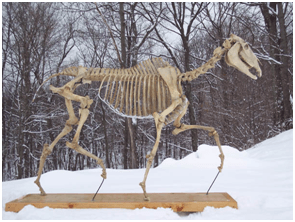
So the hoof needs the support it was built with. The lamina are a crucial part of that support. It’s genius actually: the hoof is supported in 3D. It has the sole and all the vertical walls. If you take those vertical walls out of the picture and rely solely on the sole (no pun intended) it’s just too much to bear. Conversely, if I were the weight of the horse, I know that I couldn’t be supported by my lamina alone. Like Velcro, it does want to stay attached, but given enough force, or repeated small forces and it will start to unbind. Take that skeleton and add 1,000-2,000 lbs of the living body… those coffin bones didn’t get any bigger.
The heel height, the toe length, the health of the digital cushion, the health of the frog, the horse moving around and expanding and contracting their hoof: all of this is part of the health of the hoof. There is balance between the work of the lamina and the work of frog and the sole.
As an owner, I encourage you to learn how to trim. Even if you never trim, you should be able to see a good trim or a bad one. Find a good farrier or hoof care professional to help you with your horse’s feet. Ask questions. I’ve bought the best saddles, the best bridles and the best horses and it all fails when you have the worst feet. It would be silly to be unfamiliar with halters and saddles to not recognize when they are not right. Same with hooves. It should be just as easy to spot poorly managed feet.
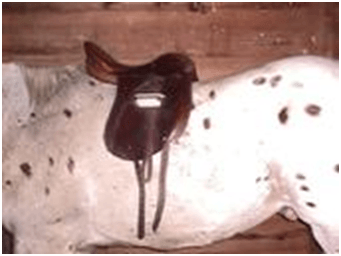
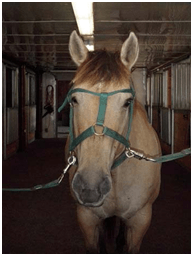
My next blog will be on the ligaments and tendons in the leg. Heard of suspensory injuries? This next blog might be right up your alley.
Holly Jonsson

Director of Sales
Through a lifetime of “horse crazy” and the fortunate experience of riding nearly every shape and size of horse, I got to see a wide array of hoof shapes and sizes. No Hoof, No Horse is very true to me. I want to ensure that horses on every continent have a variety of footwear to pick from, to ensure the best match is found. I want your partner to be happy from the ground up!





